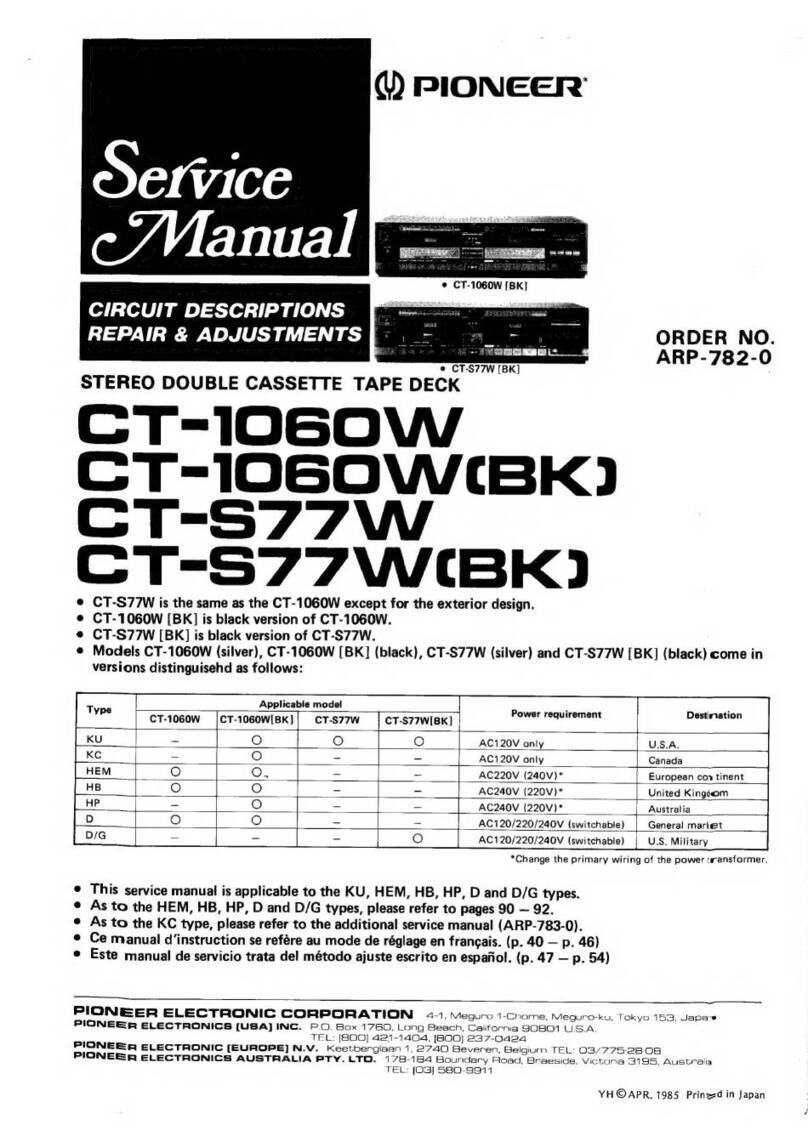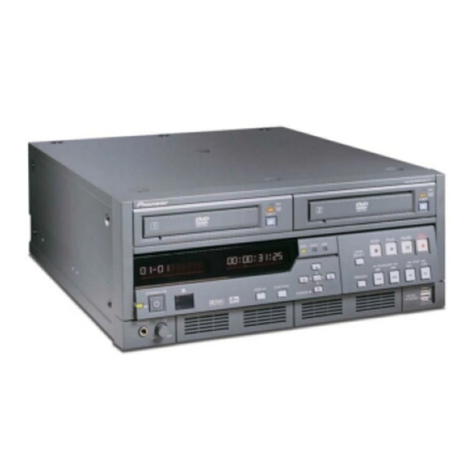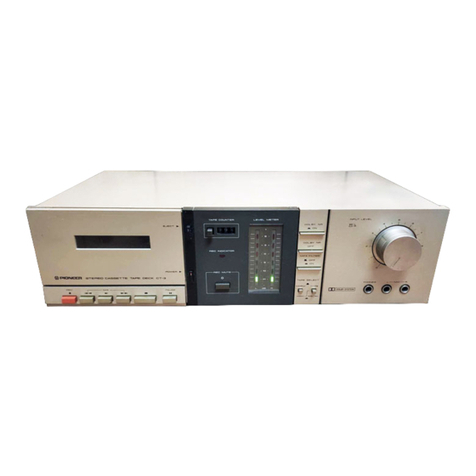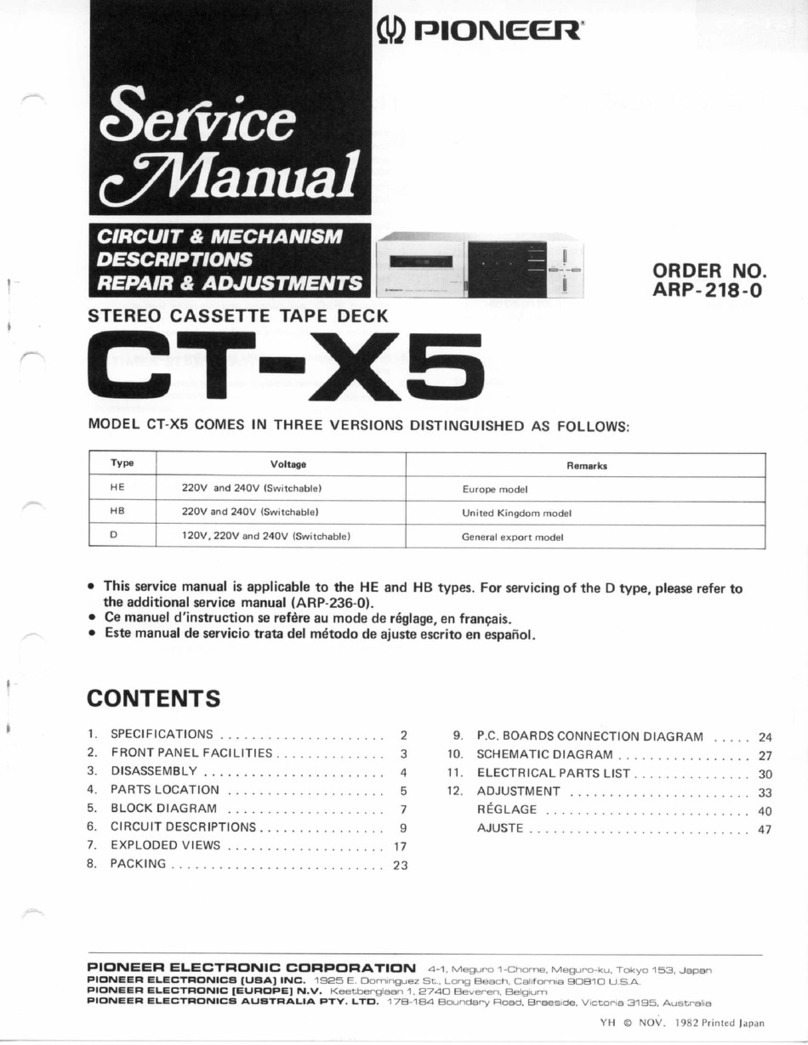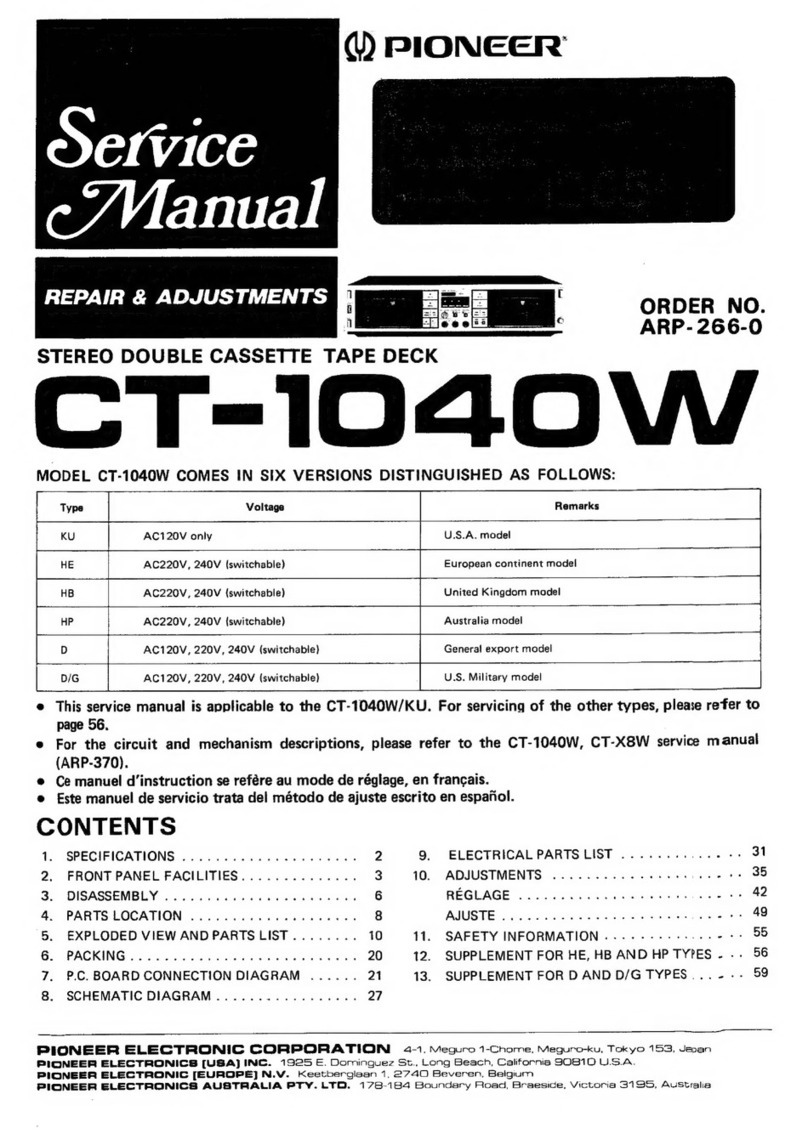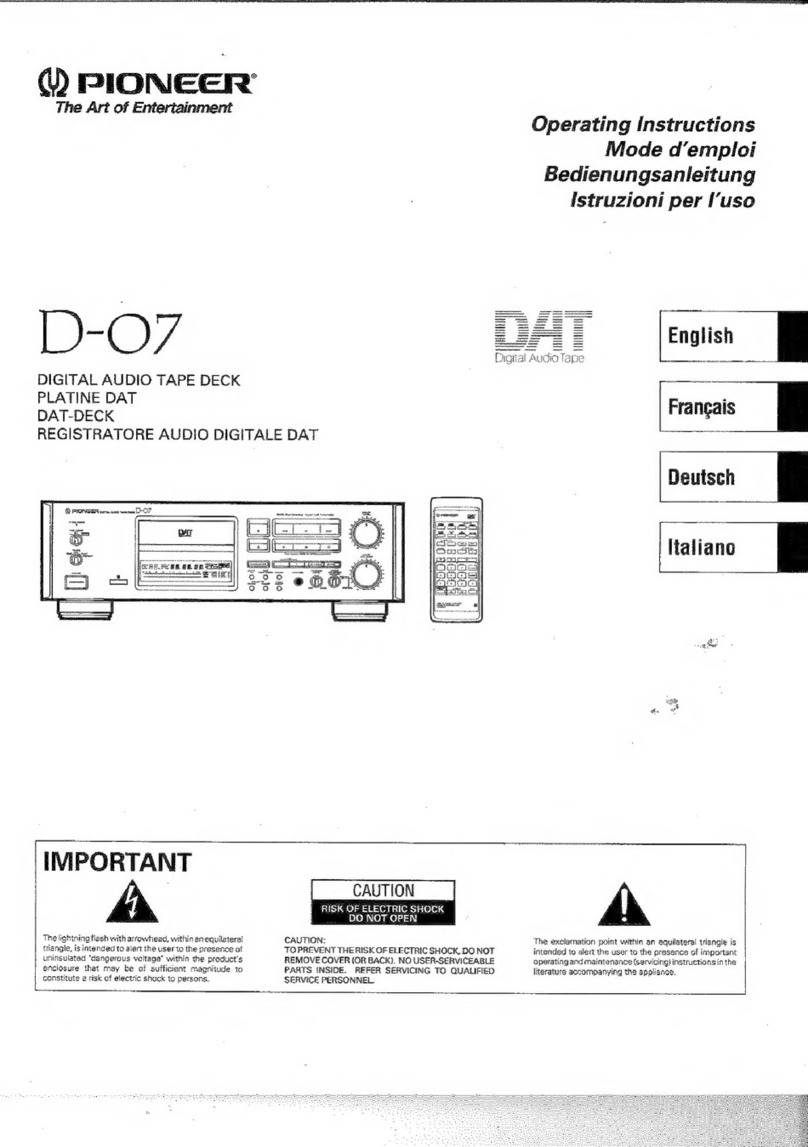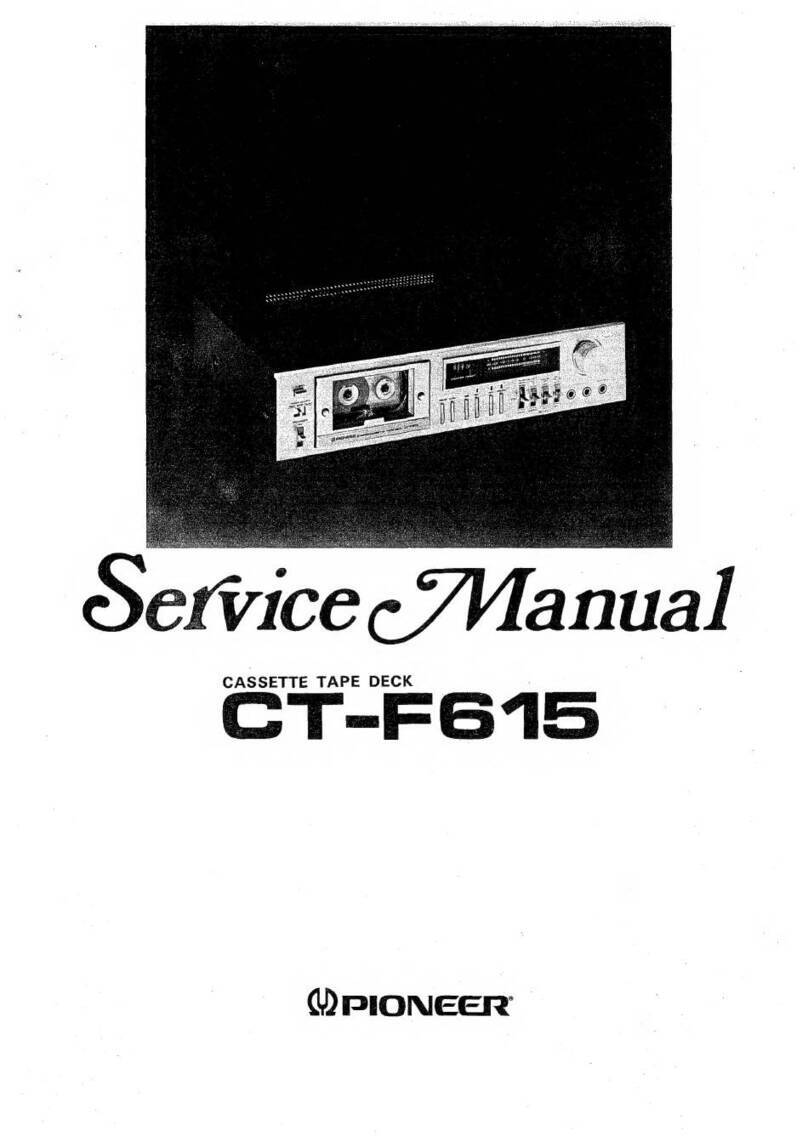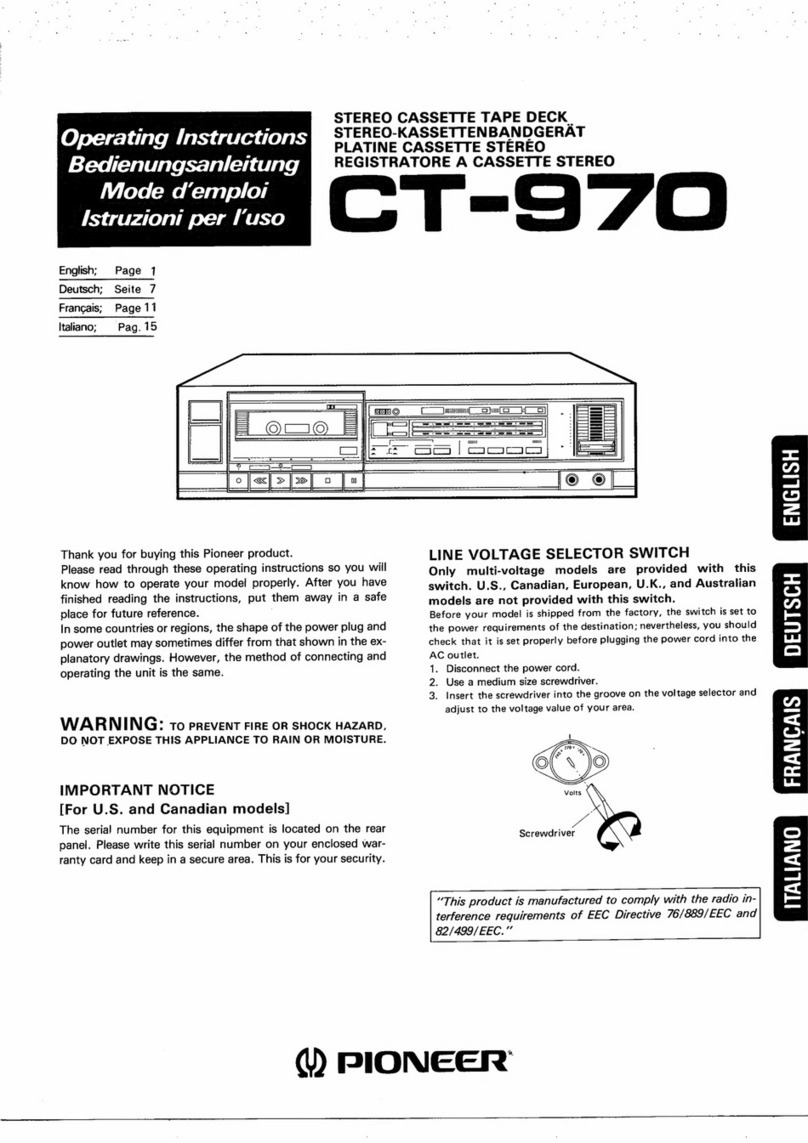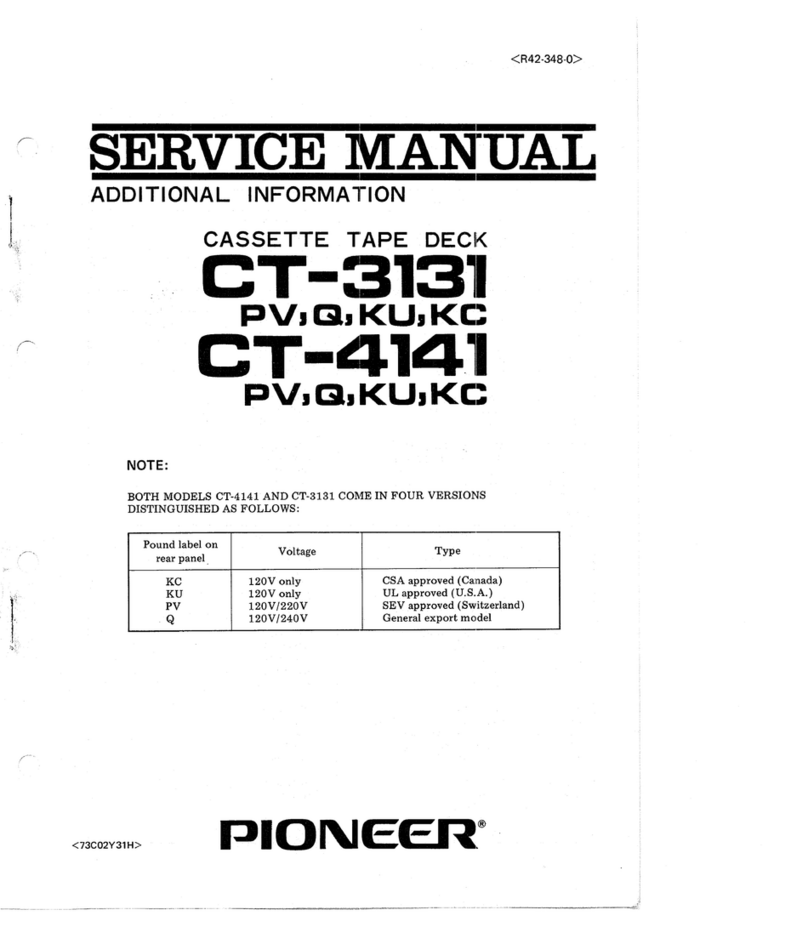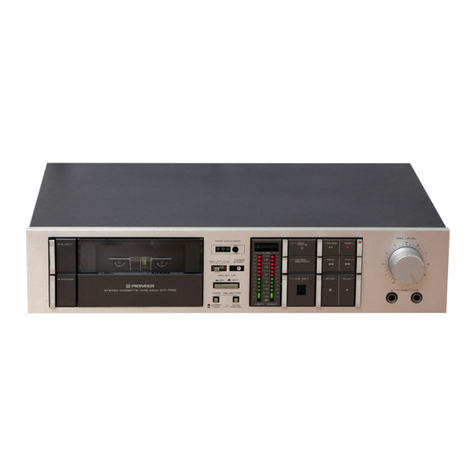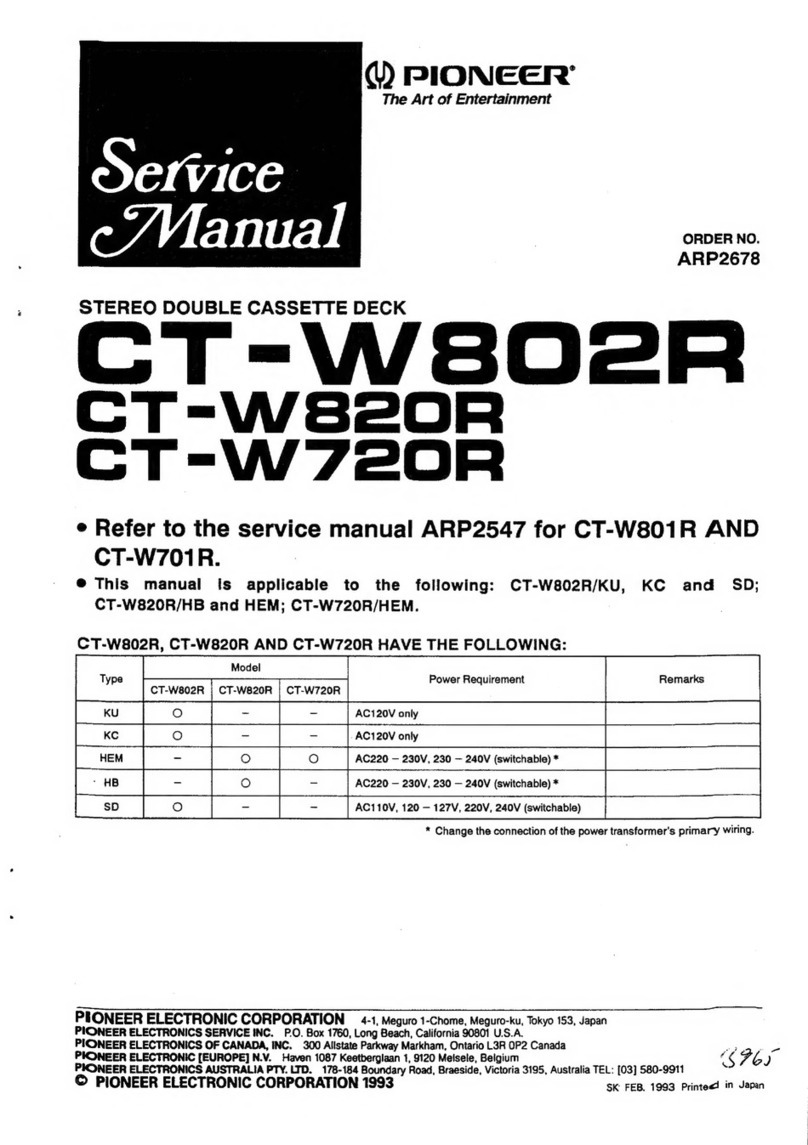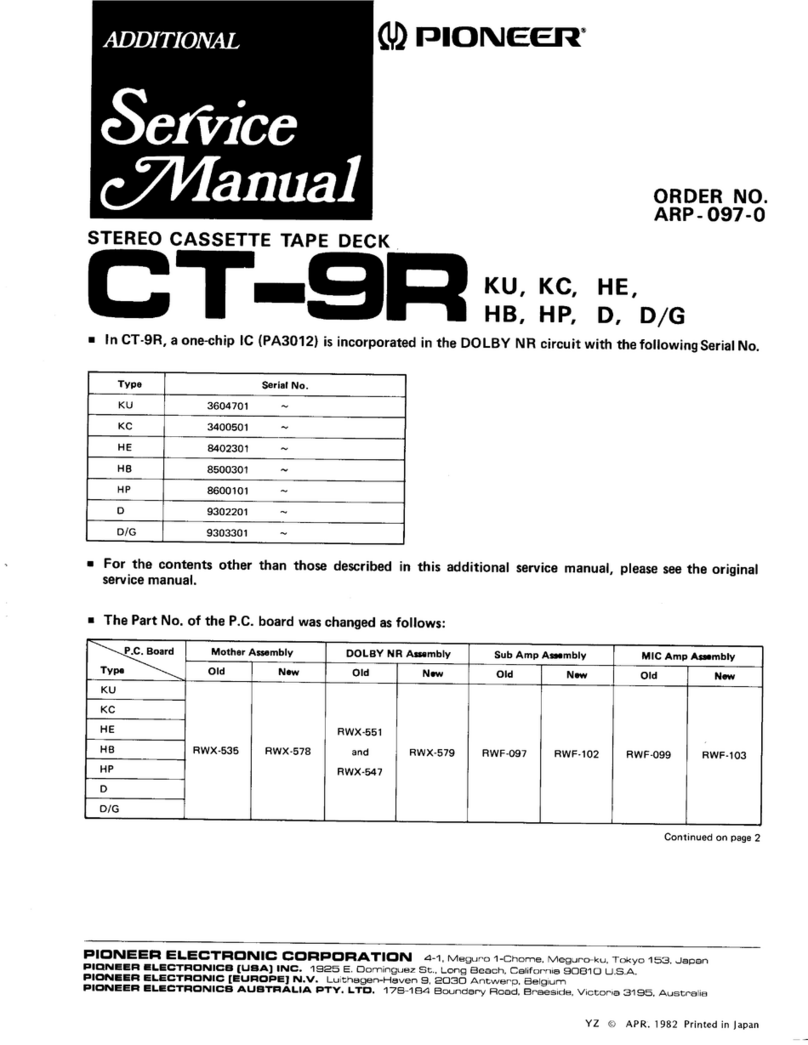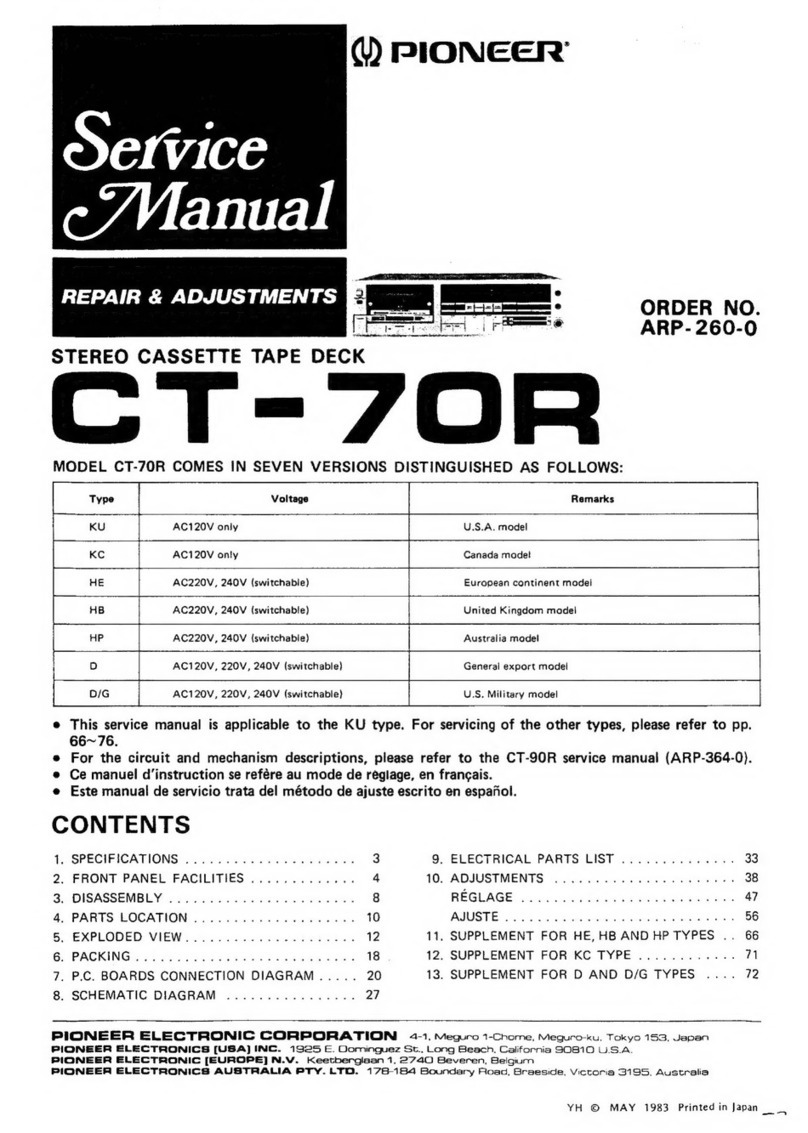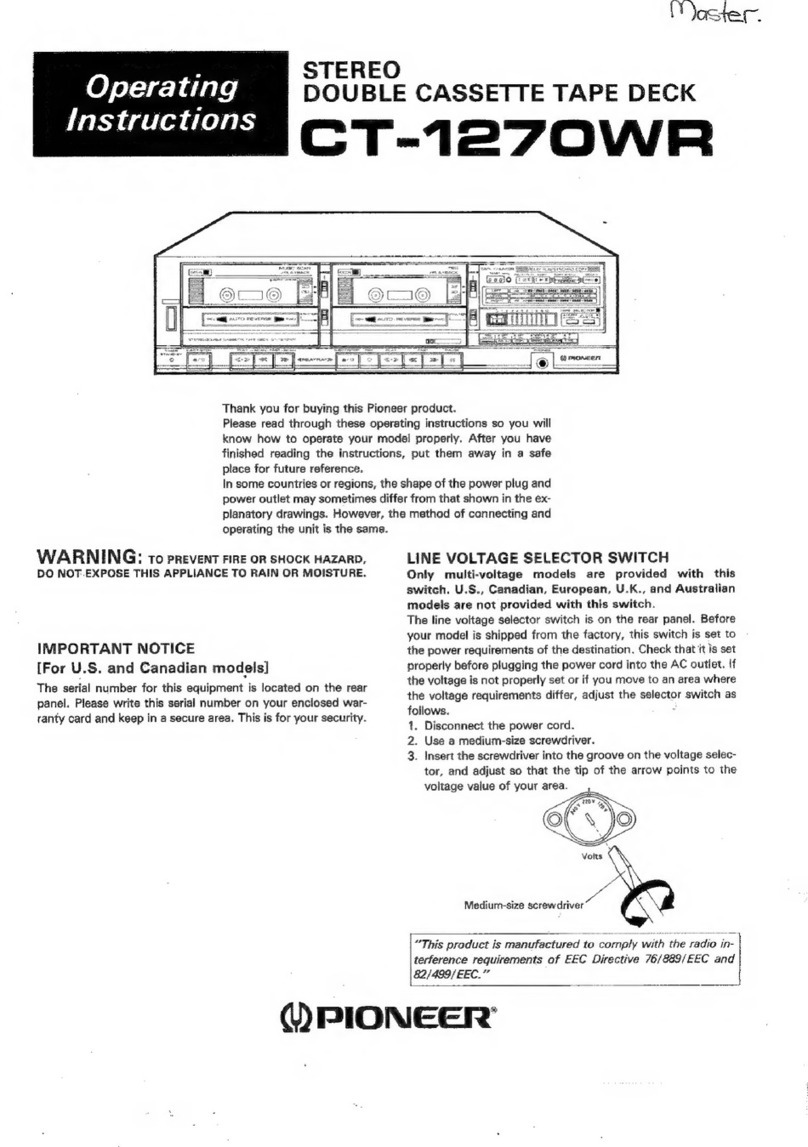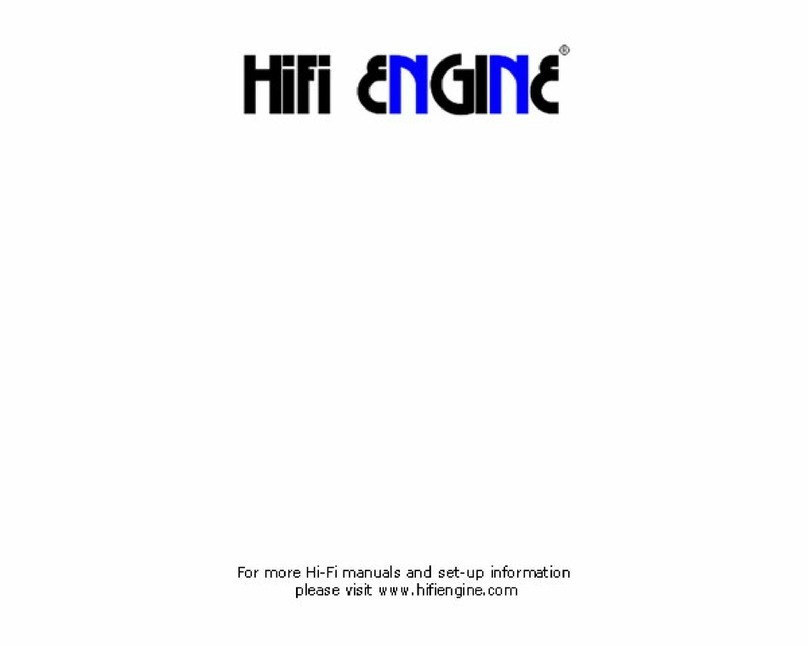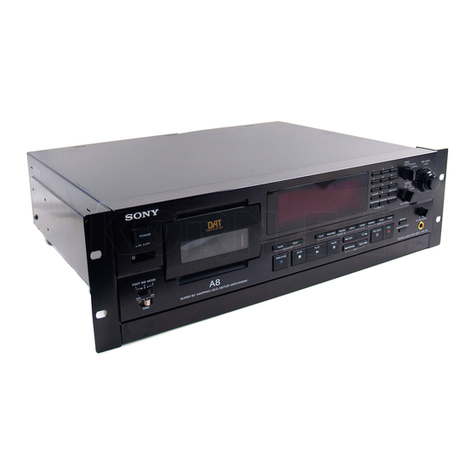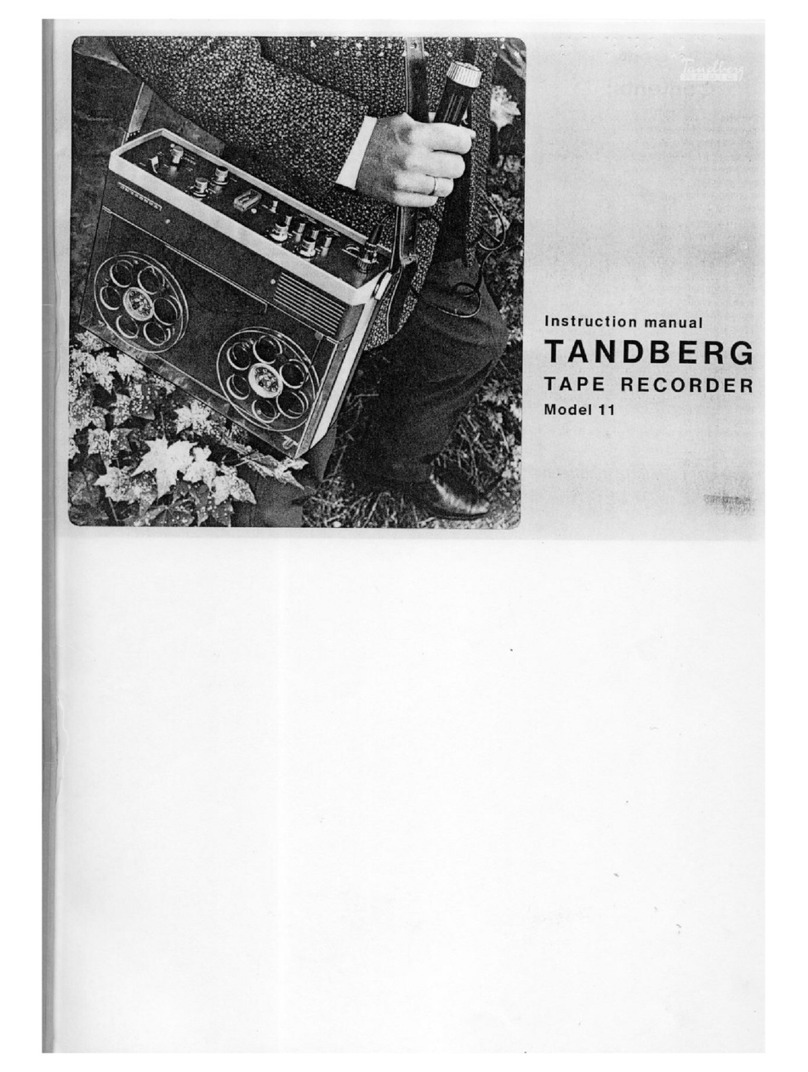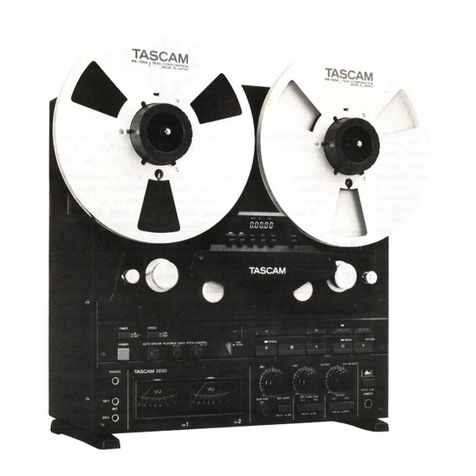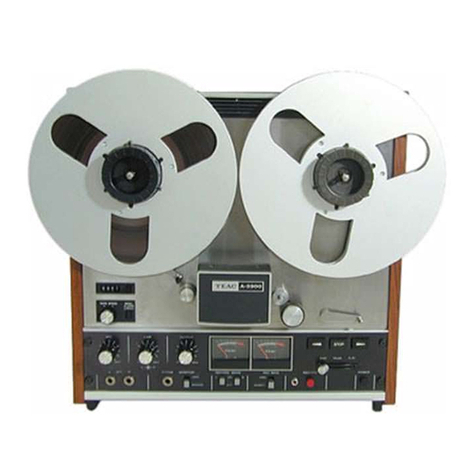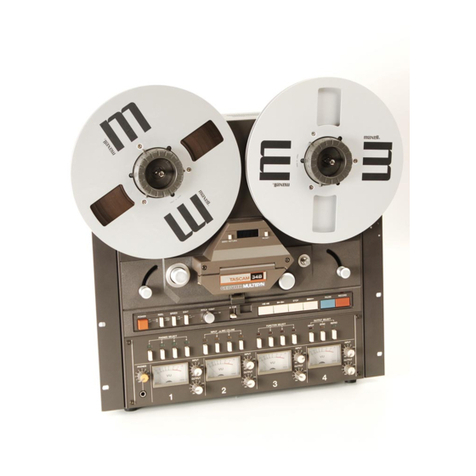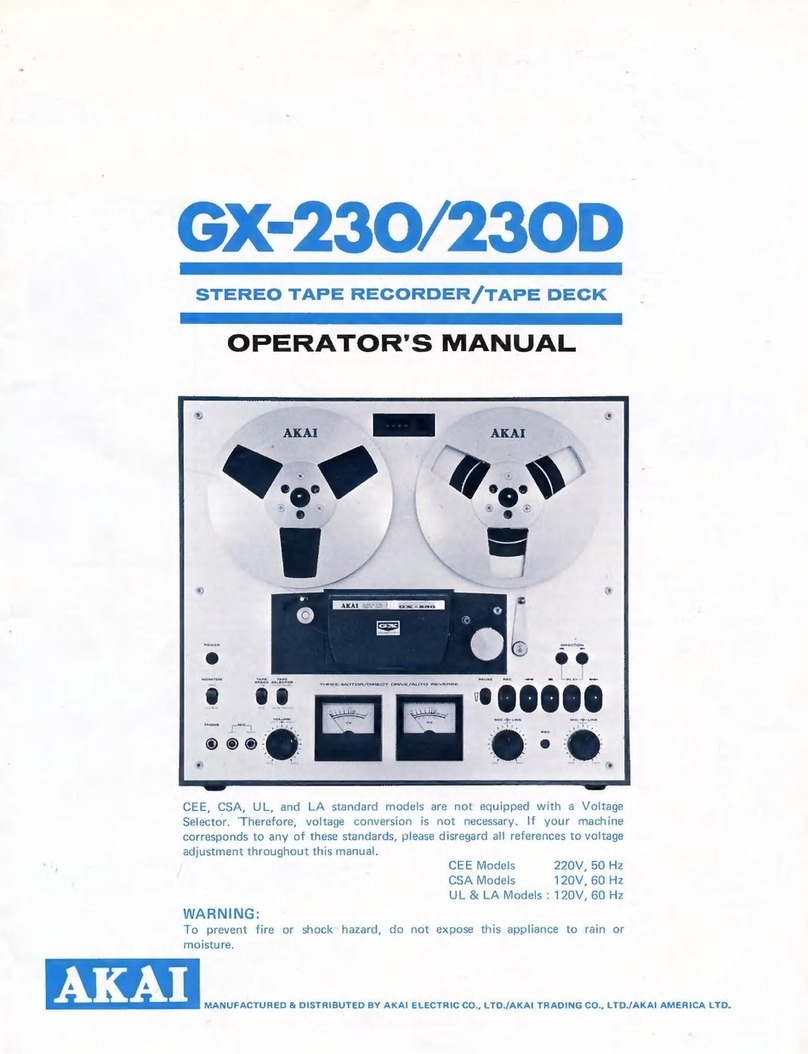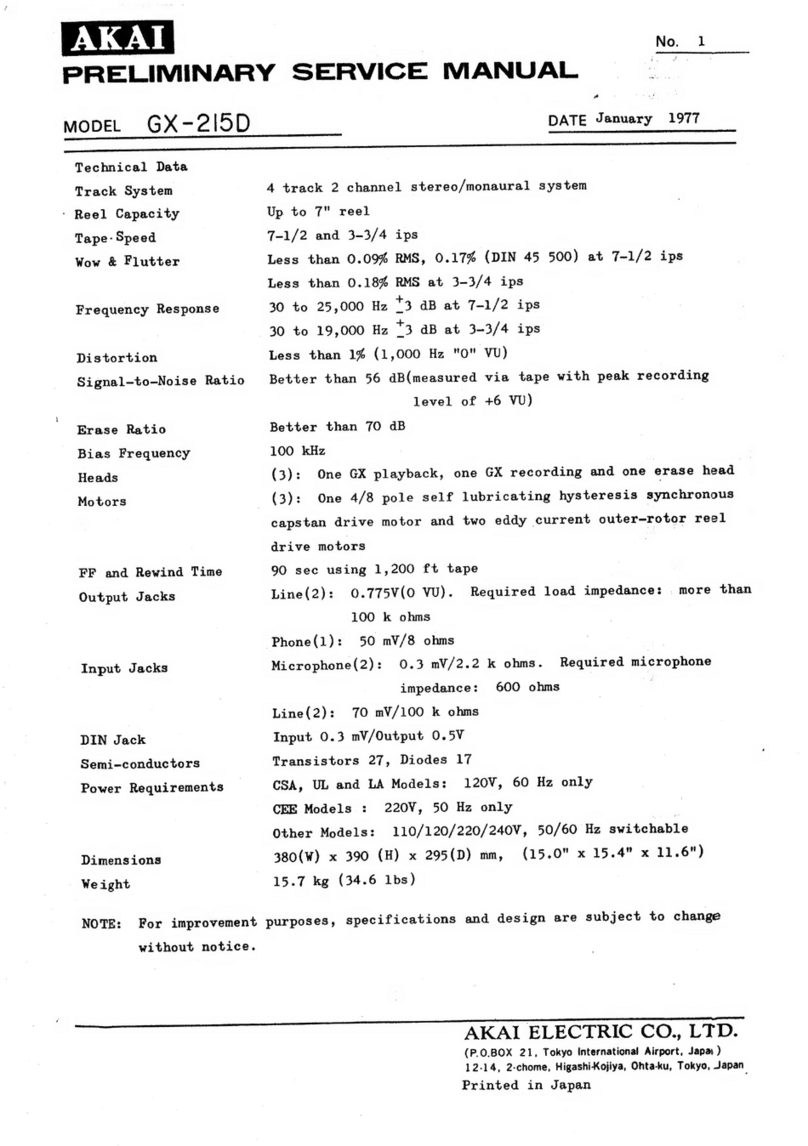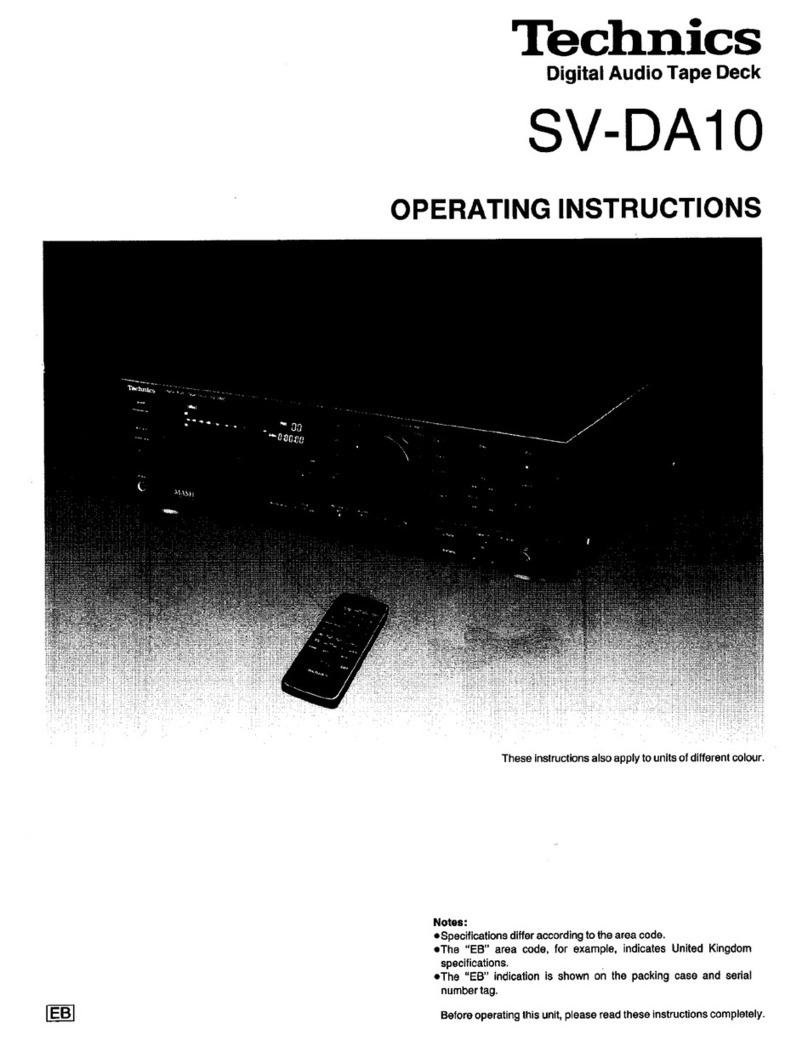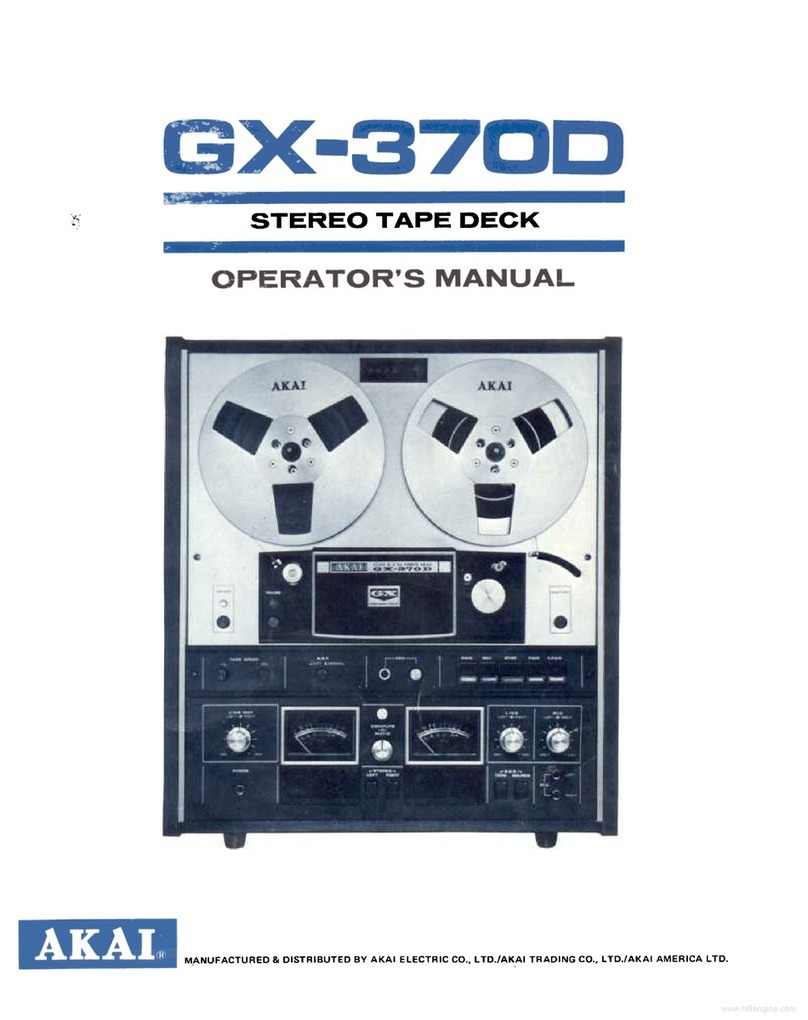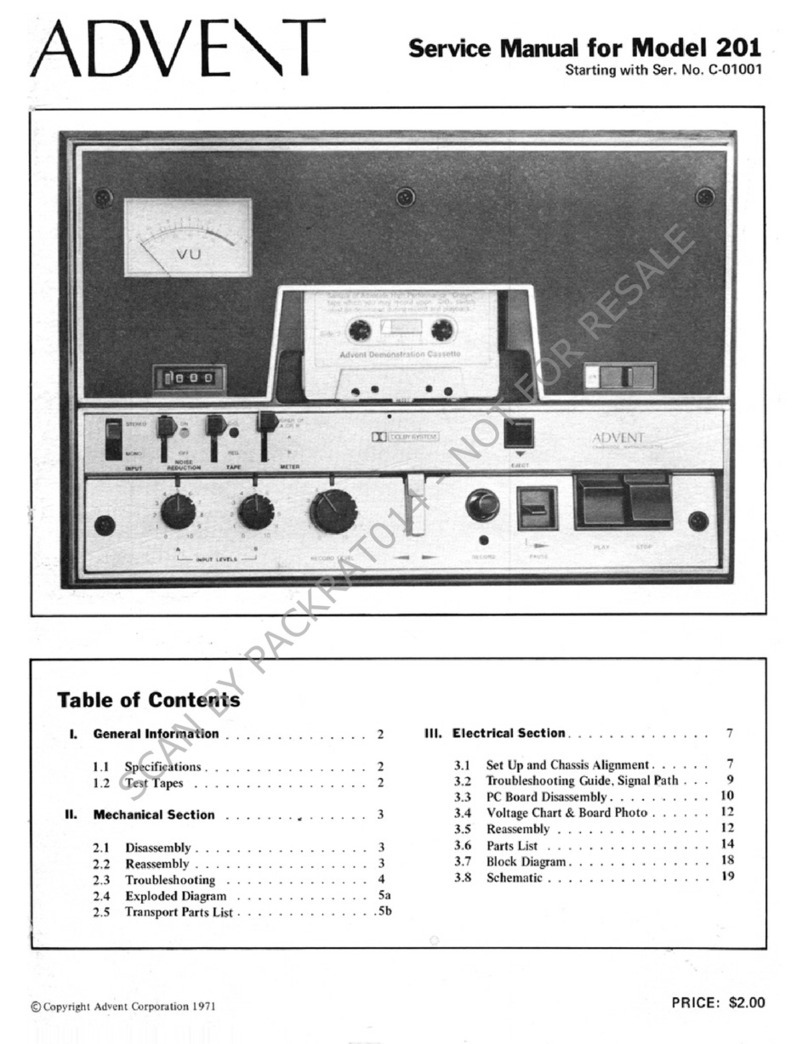rê
$
1. SPECIFICATIONS
System
.......... 4track,2-channel
stereo
Heads
....................
"Hard
Permalloy"
recording/playbackhead
x 1
"Hard Permalloy"
playback
head
x 1
"Ferrite" erasingheadx 1
Dummyerasing
headx 1
Motor........... .....DC
servomotorx2
Wow/Flutter No morethan
0.07olo
(WRMS)
Nomore
than
+0.20% (DlN)
Fast
WindingTime......................Approx.
110
seconds
(C-60
tape)
Frequency Response
-20 dB recording:
Normal
tape ........
30
to 14,500
Hz
(35
to 14.000
Hz
+ 3dB)
Chromerape............. 30to 15,500Hz
(35
to 14.500
Hz)
Metaltape ..........
30to 16,000Hz
{35
to 15,000
Hz
+ 3dB)
Signal-to-NoiseRatio
DolbyNROFF.............. MorethanSTdB
Noise Reduction Effect
DolbytypeBNRON ...Morethanl0dB(at5kHz)
Dolbytype
CNR
ON ... More
than 19dB (at
5kHz)
Harmonic
Distortion ......... No morethen 1.0olo
(0
dB)
Input(Sensitivity)
LINE
(INPUT) ................,.90
mV
(lnput
impedance
83kQ)
Output (Reference
level)
LINE
(ourPUT)
""' iorrr"i,".,o"o"";;i:;[T
SUBFUNCTIONS
. One-touch recording
. Built-inDolbyB/C type nosiereductionsystem
o Fullelectronicauto-stop mechanism
e lC-based
full logiccontrol
. Automatic tape selector
function
o Relay
play function for continuous playback
o Tape
copying
function
(FromDeckA to Deck B)
. Pitch
control
function
(Deck
A)
o Music
search
function
(Deck
A and B)
r Timer
standbv
function(Deck
B)
o RECmutingfunction
. Automatic levelcontrol
o Direct
program
search
{Deck
A)
. Program
memoryskip{Deck
A)
. Program
quick
skip
(Deck
A)
. Random
aulo edit(From
DeckA to DeckB)
This equipment generatesand uses radio frequency energy and if
not installed
and usedproperly,that is, in stricl accordancewith the
manufacture's instructions; mav cause interference to radio and
television reception lt has been type tested and found to comply
wilh the limitsfor a ClassB computing devicein accordance
with
the specificationsin SubpartJ of Part15
of FCC
Rules,which are
designed
to provide reasonable
protection against
such interference
in a residential
installation.However,thereisno guaranlee
that in-
lerferencewill not occurina particular
installation.lf this
equipment
does cause interferenceto radio or television reception, which can
bedeterminedby turningthe equipment
off andon, the user
is
en-
couraged to try to correct the interference by one or more of the
MISCELLANEOUS
Power requirements
KU model AC 120
V, 60Hz
H
B model ..... AC2'10V. 50/60 Hz
HEMmodel ... AC220V,50/60 Hz
Power consumotion
KU, HEMand
HB mode|s.......,.,, 17wa11s
Dimensions ..........42O
(W)
x 102
(H)
x314.5
(D)
mm
16-9/16
(W)
x4
(H)
x 12-6116
(D)
in
Weight(without
packaging) ........
5.5
k9 l12lb 2 ozl
FURNISHED
PARTS
Operating
instructions .............I
Connection
cord
with
pin
plug ........
2
Cottonswabset............... ........
..'l
NOTES:
1 Reference
Taoes:
Normal
and LH: DIN44513/BLAÏTO
or equrv.
CrO2
DIN
45513/BLATTT{CrO2)
or equiv.
2.
4.
Reference
Recording Level: -10 dBv level at line out (160
nwb/m magnetic level = Philipscassette
reference
level)
ReferenceSignal:
315
Hz
Wow and Flutter:
. JIS 13
kHz, with acousticcompensation
(weighted)
rmsvaluel;
DIN 13,150
Hz,with acouslic
compensa-
tion (weighted)
PEAKvalue
DIN
45507
Frequency
Response:
. Measuredat - 20dB level,DOLBY NR
OFF,
leveldeviation
is+ 6 dB without.indication.
Signal
to NoiseRatio:
. Measuredat the third harmonicdister-
tion3% level,weighted
(DlN 45513/BLATTT).
Sensitivitv: Input level (mV) required for reference recording
levelwith input (REC)
level
controls
setto maximum.
Maximum Allowable
Input: While decreasingsettings
of input
(REC)
levelcontrols
andincreasinglevelat input
jacks,
thisisthe
maximum
input
level
(mV)
at
thepoint
whererecordingamplifier
output wave form becomes clipped.
Reference
Output Level: -'10 dBv level at line out during
playback.
10.This model does not employ a recording/playback
conneclor
(DlN-type).
NOTE:
Specifications and the design are subiect to possible modifications
without notice due to imDrcvements.
. reorientthe receiving
antenna
. relocatethe cassettetape deck with respectto the receiver
. move the cassettetape deck away from the receiver
. plug the cassette tape deck inlo a different outlet so that the
cassettetape deck and receiverareon different branch circuits.
lf necessary,the usershouldconsult
the dealer
or an experienced
radio/television
technicianfor additionalsuggestions.
Theusermay
findthefollowing
booklet
prepared
by the Federal
Communications
Commission
heloful.
"How to ldentify and Resolve
Radio-TV InterterenceProblems"
ïhis bookletis available
from the US GovernmentPrinting
Office,
Washington, O.C
-, 2W2, Stock No. 004-000-00345-4.
5.
R
7.
j followinSmeasures:
The above instructions apply only to units which will be operated in the United States
